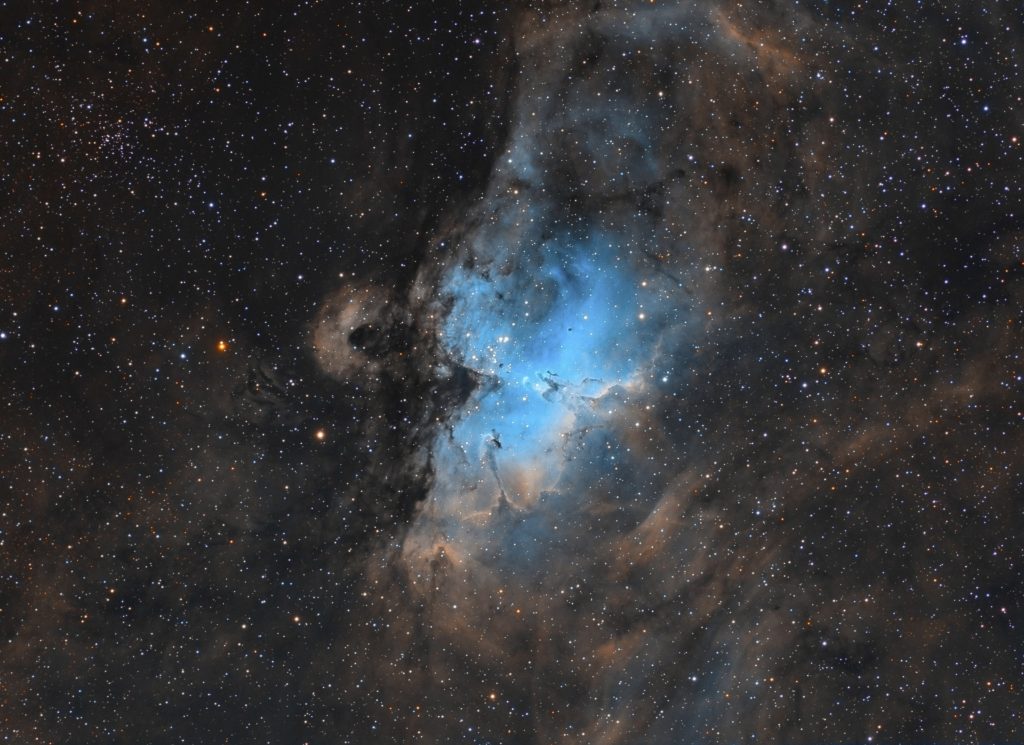The Eagle Nebula is a cloud of gas and dust in the constellation Serpens, mainly molecular hydrogen, some 7,000 light years away from us and 50 to 70 light years wide. It contains several stellar nurseries and is about 5.5 million years old. The center of the nebula is illuminated by hundreds of bright very young stars, as identified by the Chandra X-Ray Observatory.
The most famous active star forming region inside M16 is the Pillars of Creation. These three columns are evaporating gaseous globules (EGGs) – that are some 4 or 5 light years wide.The pillars are featured in two of the most famous photos taken by the Hubble Space Telescope, first in 1995 and then again in 2015. The twenty years between the two photos allows us to note some changes in the shape of these vast molecular clouds.
M16 was discovered mid-18the century and rediscovered by Messier in 1764 and thus got its notation. The first photograph of M16 was made in 1895 by the astronomer Barnard.
Data and processing: Goran Petrov
License: Creative Commons BY NC (free for non-commercial use, with attribution).
Click on the image to view full size.
Location: Radibus, Rankovce, Macedonia
Dates: 2020-07-21 and 2020-07-22
Total integration time: 7 hours
Camera 1: ATIK One 9.0, cooled to -10C
Telescope 1: Takahashi FSQ 106 ED refractor
Filters:
Ha, Sii and OIII: total of 41 frames x 10 min
Processed in PixInsight.
